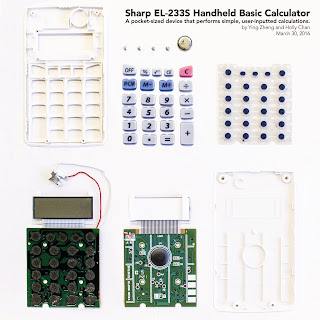We had already expected that the processor chip, as the "brain" of the calculator, handles the logic of its calculations. Still, on its own it does not handle translating the physical input into binary logic, or outputting an LCD display. We were surprised to discover that the calculator contains a membrane that not just provides the tactile feedback one gets from pressing the buttons, but also contains the carbon that conducts with the back of the processor chip, thus relaying the user's input to the brain.
The logic of the processor chip as well as the mechanics behind the LCD screen are described below in our function diagram:


No comments:
Post a Comment